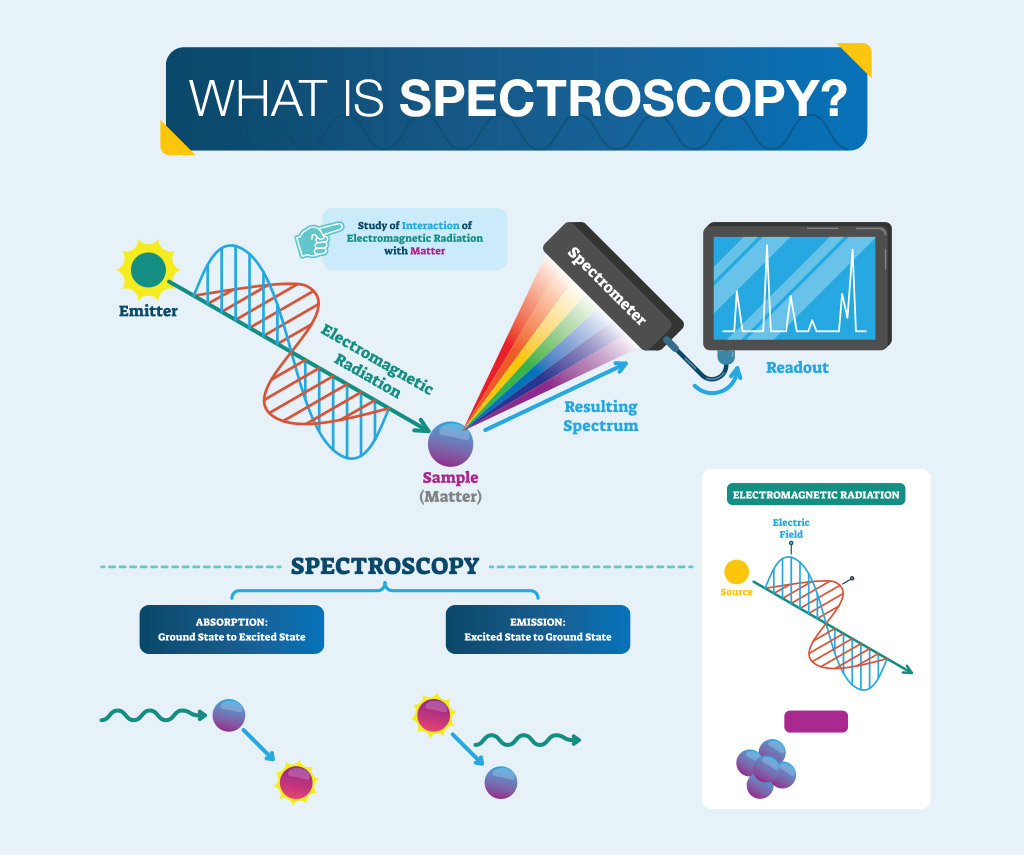Which Describe the Study of Spectroscopy
Spectroscopy is a branch of physics that deals with the interaction of light with materials. Choose from 500 different sets of spectroscopy flashcards on Quizlet.
Select the two correct answers.

. View the full answer. Hello student Study of spectroscopy includes emission and absorption of light and interaction of light with atom. Learn spectroscopy with free interactive flashcards.
Spectroscopy is the study of the absorption and emission of light and other radiation by matter. Time-resolved TR infrared IR spectroscopy in the nanosecond to second timescale has been extensively used in the last 30 years in the study of photosynthetic systems. Spectroscopy is the study of the way light electromagnetic radiation and matter interact.
Emission and absorption of light. It is the study of how compounds emit electrons when light shines on. B the number of galaxies.
Think of the way light is affected when it hits a glass prism. There are a number of different types of spectroscopic techniques and the basic principle shared by. D reflection of light by Earth.
One specific type of. Infrared spectroscopy is the. A series or pattern of bright lines superimposed on a continuous spectrum.
Raman spectroscopy almost always involves the measurement of Stokes scattering. Electronic spectroscopy is an analaytical tool used by scientists in order to understand the electronic configuration of different atoms and molecules. Other types of spectroscopy are distinguished by specific applications or implementations.
Last Updated On September 28 2021 by Ranganr. New designs in optics specifically prisms enabled systematic observations of the solar spectrum. The Study of interaction between radiated energy and matter is spectroscopy.
In simple words it is the. Spectroscopy is the branch of science dealing with the study of interaction of electromagnetic radiation with matter. It involves the splitting of light or more precisely.
When white light hits. The large number of wavelengths emitted by these systems makes it possible to investigate their. An instrument for obtaining a spectrum.
Learn about the definition Principles for a range of spectroscopic techniques different Types of Spectroscopy. Chlorophyll is a green pigment present in the chloroplast grains of plant cells or in prokaryotic organisms that carry out chlorophyll. Up to 24 cash back Spectroscopyspectrometry is often used in physical and analytical chemistry for the identification of substances through the spectrum emitted from or absorbed.
C interaction of light and atoms. Spectroscopy is the measurement and interpretation of electromagnetic radiation absorbed or emitted when the molecules or atoms or ions of a sample move from one energy. Spectroscopy is the study of the way electromagnetic radiation and matter affect each other.
In astronomy usually attached to a. As View the full answer. Modern spectroscopy in the Western world started in the 17th century.
Question 3 1 pts Which of the following best describe spectroscopy. Spectroscopy is the study of the interaction between matter and electromagnetic radiation as a function of the wavelength or frequency of the radiation. RAMAN AND INFRARED MODE ACTIVITY AND INTENSITY The number of degrees.
Spectroscopy is used as a tool for studying the structures of atoms and molecules. In other words it is an analytical. Acoustic resonance spectroscopy is based on sound waves primarily in the audible and.

Spectroscope Definition Parts Uses Video Lesson Transcript Study Com

Organic Chemistry Functional Groups Worksheet Chemistry Worksheets Math Addition Worksheets Functional Group

Comments
Post a Comment